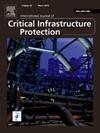开发空间系统的安全指标:考虑NIST网络安全框架2.0和NIS2的研究
IF 5.3
3区 工程技术
Q1 COMPUTER SCIENCE, INFORMATION SYSTEMS
International Journal of Critical Infrastructure Protection
Pub Date : 2025-10-03
DOI:10.1016/j.ijcip.2025.100805
引用次数: 0
摘要
天基资产对于能源、交通、通信、农业和政府等部门的关键社会功能至关重要。随着这些服务越来越多地融入日常生活,对网络物理系统的依赖越来越大,空间资产的互联性和商业化增加了攻击面和网络安全风险。最近影响空间基础设施的事件凸显了对强有力的网络安全措施的迫切需要。欧盟和其他国家的立法者正在通过制定最低保护要求来解决空间和地面资产面临的网络风险。为了支持这些措施,本文评估了文献中现有的安全指标是否涵盖了网络安全框架2.0 (CSF 2.0)中的所有NIST功能、类别和子类别。这个框架为行业部门提供了一个坚实的基础,可以作为基线,以确保遵守像NIS2这样的指令。我们的分析揭示了学术话语的不平衡,某些CSF 2.0功能被低估了。然后,我们提出了新的指标来解决未解决的NIST类别,并调整现有指标以更好地适应空间领域。考虑到实现和监控这些指标的实际挑战,我们提出了一个工具来促进它们的计算和可视化安全状态。我们还提供了一个类似于现实世界空间基础设施的案例研究,展示了我们的工具的适用性和设计指标的价值。我们的研究具有管理意义,支持经理、首席信息官和首席信息官做出明智的决策,帮助公司了解他们的安全级别,并遵守现有和即将出台的航天部门法规。我们提倡使用安全指标来评估对NIS2、CER或即将出台的空间法律等法规的遵从性,向政策制定者展示可以将指标集成到政策中以提高其有效性。本文章由计算机程序翻译,如有差异,请以英文原文为准。
Developing security metrics for space systems: A study considering the NIST Cybersecurity Framework 2.0 and the NIS2
Space-based assets are essential for critical societal functions across sectors like energy, transportation, communication, agriculture, and government. As these services become more integrated into daily life and reliance on cyber–physical systems grows, the interconnectivity and commercialization of space assets increases the attack surface and cybersecurity risks. Recent incidents affecting space infrastructure underscore the urgent need for robust cybersecurity measures. Legislators in the EU and other countries are addressing cyber risks to space and ground assets by developing minimum protection requirements. To support these measures, this paper evaluates whether existing security metrics in the literature cover all NIST functions, categories, and subcategories in the Cybersecurity Framework 2.0 (CSF 2.0). This framework provides a strong foundation for industry sectors and can serve as a baseline to ensure compliance with directives like NIS2. Our analysis reveals imbalances in academic discourse, with certain CSF 2.0 functions underrepresented. Then, we propose new metrics to address unaddressed NIST categories and adapt existing metrics to better suit the space domain. Considering practical challenges in implementing and monitoring these metrics, we propose a tool to facilitate their calculation and visualize security status. We also present a case study resembling real-world space infrastructure that demonstrates our tool’s applicability and the value of the designed metrics. Our research has managerial implications, supporting managers, CIOs, and CISOs in making informed decisions, helping companies understand their security levels, and complying with existing and forthcoming space sector regulations. We advocate for using security metrics to assess compliance with regulations like NIS2, CER, or upcoming space laws, demonstrating to policymakers that metrics can be integrated into policies to enhance their effectiveness.
求助全文
通过发布文献求助,成功后即可免费获取论文全文。
去求助
来源期刊

International Journal of Critical Infrastructure Protection
COMPUTER SCIENCE, INFORMATION SYSTEMS-ENGINEERING, MULTIDISCIPLINARY
CiteScore
8.90
自引率
5.60%
发文量
46
审稿时长
>12 weeks
期刊介绍:
The International Journal of Critical Infrastructure Protection (IJCIP) was launched in 2008, with the primary aim of publishing scholarly papers of the highest quality in all areas of critical infrastructure protection. Of particular interest are articles that weave science, technology, law and policy to craft sophisticated yet practical solutions for securing assets in the various critical infrastructure sectors. These critical infrastructure sectors include: information technology, telecommunications, energy, banking and finance, transportation systems, chemicals, critical manufacturing, agriculture and food, defense industrial base, public health and health care, national monuments and icons, drinking water and water treatment systems, commercial facilities, dams, emergency services, nuclear reactors, materials and waste, postal and shipping, and government facilities. Protecting and ensuring the continuity of operation of critical infrastructure assets are vital to national security, public health and safety, economic vitality, and societal wellbeing.
The scope of the journal includes, but is not limited to:
1. Analysis of security challenges that are unique or common to the various infrastructure sectors.
2. Identification of core security principles and techniques that can be applied to critical infrastructure protection.
3. Elucidation of the dependencies and interdependencies existing between infrastructure sectors and techniques for mitigating the devastating effects of cascading failures.
4. Creation of sophisticated, yet practical, solutions, for critical infrastructure protection that involve mathematical, scientific and engineering techniques, economic and social science methods, and/or legal and public policy constructs.
 求助内容:
求助内容: 应助结果提醒方式:
应助结果提醒方式:


